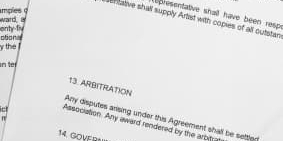Employment-Based Immigration
My company is growing but I am unable to find qualified workers to keep up with business demands. Are foreign workers an option?
Yes, albeit a qualified yes, given the strict requirements imposed by Congress. Immigration law allows employers in various industries to bring in foreign workers to support their business needs when the employers are unable to find qualified U.S. workers. There are many employment-based visa classifications, including those for professional, skilled, or unskilled workers.
The H-2B classification permits U.S. employers who meet specific regulatory requirements to bring foreign workers on Employment-Based Immigration from certain eligible countries (currently 58 countries) to the United States to fill temporary non-agricultural jobs. (The “other half” of the H-2 classification is the H-2A visa, which is reserved for agricultural workers, a topic to be discussed in a future article.) Examples of occupations sought for H-2B classification include, but are not limited to: (1) landscaping and groundskeeping workers; (2) maids and housekeeping cleaners; (3) amusement and recreation attendants; (4) meat, poultry, and fish cutters and trimmers; (5) constructions laborers; (6) production workers; (7) cooks; and (8) laborers and freight, stock, and materials movers, to name a few. (U.S. Dept. of Labor, Office of Foreign Labor Certification, FY 2016 YTD.)
The process of bringing in foreign workers, however, is far from easy and it requires the petitioning employer, through the U.S. Department of Labor (DOL), to first test the labor market to make sure there are not enough qualified U.S. workers who are able, willing, qualified, and available to do the temporary work, and the employment of the temporary workers will not adversely affect wage rate and working conditions of similarly employed U.S. workers.
The employer, thus, must first apply for and obtain approval for a temporary labor certification from DOL, which includes advertising for the position in different forums. The employer then applies for and obtains approval for H-2B classification from U.S. Citizenship and Immigration Services (USCIS), which works with a Congressionally-mandated cap or limit of 66,000 visas per fiscal year. Once USCIS issues approval, it is up to the foreign worker to apply for a visa with a U.S. embassy or consulate abroad and meet a host of other requirements. After obtaining his/her visa, the worker then applies for admission with U.S. Customs and Border Protection (CBP). Lastly, the foreign worker enters the U.S., starts working for the employer and, like a U.S. worker, is subject to taxation requirements.
The H-2B visa classification is authorized on a temporary basis, typically no more than one year. If the employer wishes to extend it, then the employer must again test the labor market before applying for an extension. Spouses and unmarried children under 21 years of age of the foreign worker may also seek admission, but these family members are not permitted to work.
For U.S. employers, planning is key given the complexity of this process, the cap on annual visas, and the strict deadlines that need to be adhered to in order to have an application processed and approved.
Disclaimer
Related Posts
January 13, 2012
Employers Beware – Provision in Employment Agreement Requiring Binding Arbitration May Be Unenforceable
Arbitration agreements in employment…



